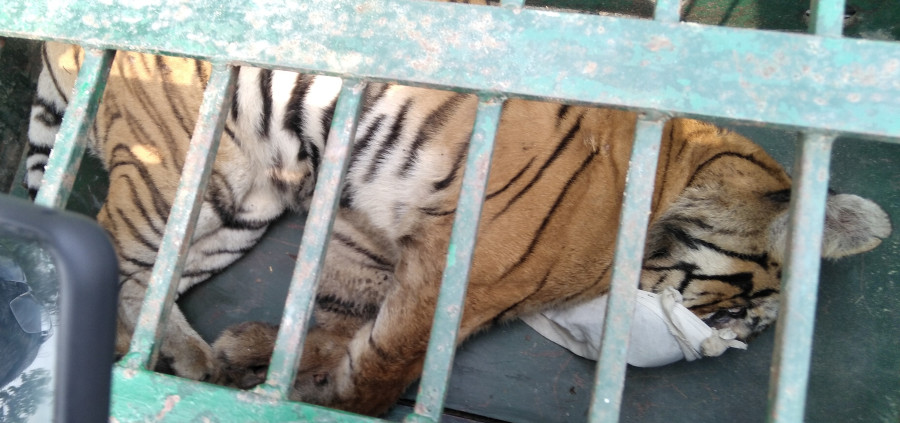Madhesh Province
Parsa National Park facing difficulties in captive tigers’ upkeep
While the number of tigers inside the PNP is increasing, limited resources and financial crunch have made the upkeep difficult, say park officials.
Shankar Acharya
A nine-year-old female tiger was brought to the Parsa National Park from the Suwarnapur forest in Thori Rural Municipality-5 last Saturday.
The tiger had been terrorising the locals before it was captured, according to the park officials.
According to Surya Khadka, assistant conservation officer and information officer at the PNP, the number of captive tigers in the park has reached three including the recently captured female tiger.
While the number of tigers inside the PNP is increasing, limited resources and financial crunch have made the upkeep of the tigers difficult for the park officials, said Khadka.
“One of the tigers was captured in April from Thori-5, the second one in July in Chitwan while the third one was captured last Saturday,” said Khadka. “The tiger rescued from Chitwan was supposed to be kept at the Chitwan National Park, but was sent here because the national park in Chitwan has already run out of space for captive tigers.”
There are five captive tigers at the Chitwan National Park, according to Khadka.
“Tigers’ upkeep is very costly. We need more manpower to take care of captive tigers. Since tigers are not supposed to be in cages, we have to keep them under surveillance 24 hours a day to monitor their health,” Khadka told the Post.
According to PNP officials, three people have to continuously monitor the activities of the caged tigers, but the park does not have additional manpower. “One tiger eats around 5kg of raw meat daily. The park spends Rs180,000 per month on feeding three tigers. There is no extra budget allocated to feed caged tigers,” said Khadka.
Khadka said that the park set aside a small budget from the one allocated for wildlife conservation and treatment. The park is facing major difficulties taking care of captive tigers, he said.
“Since the captured tigers are often injured or sick, they require long-term treatment. After a long period of treatment, observation, and care, we ask permission from the Department of National Parks to release them back to their natural habitats,” said Khadka. "Discussions are on with the Department of National Parks and Wildlife Conservation and the Ministry of Forest and Environment, among other related agencies, to provide a separate budget and staff for captive tigers’ care, but we are not sure when the budget will be released,” he added.
According to the park, due to recent efforts of the government in the field of conservation of tigers, the number of tigers is increasing every year but since there is a limited budget, the park is burdened with extra cost for the captive tigers. Twelve years ago, there were only three tigers in the park; now there are 41 adult tigers, according to Khadka.




 16.12°C Kathmandu
16.12°C Kathmandu














